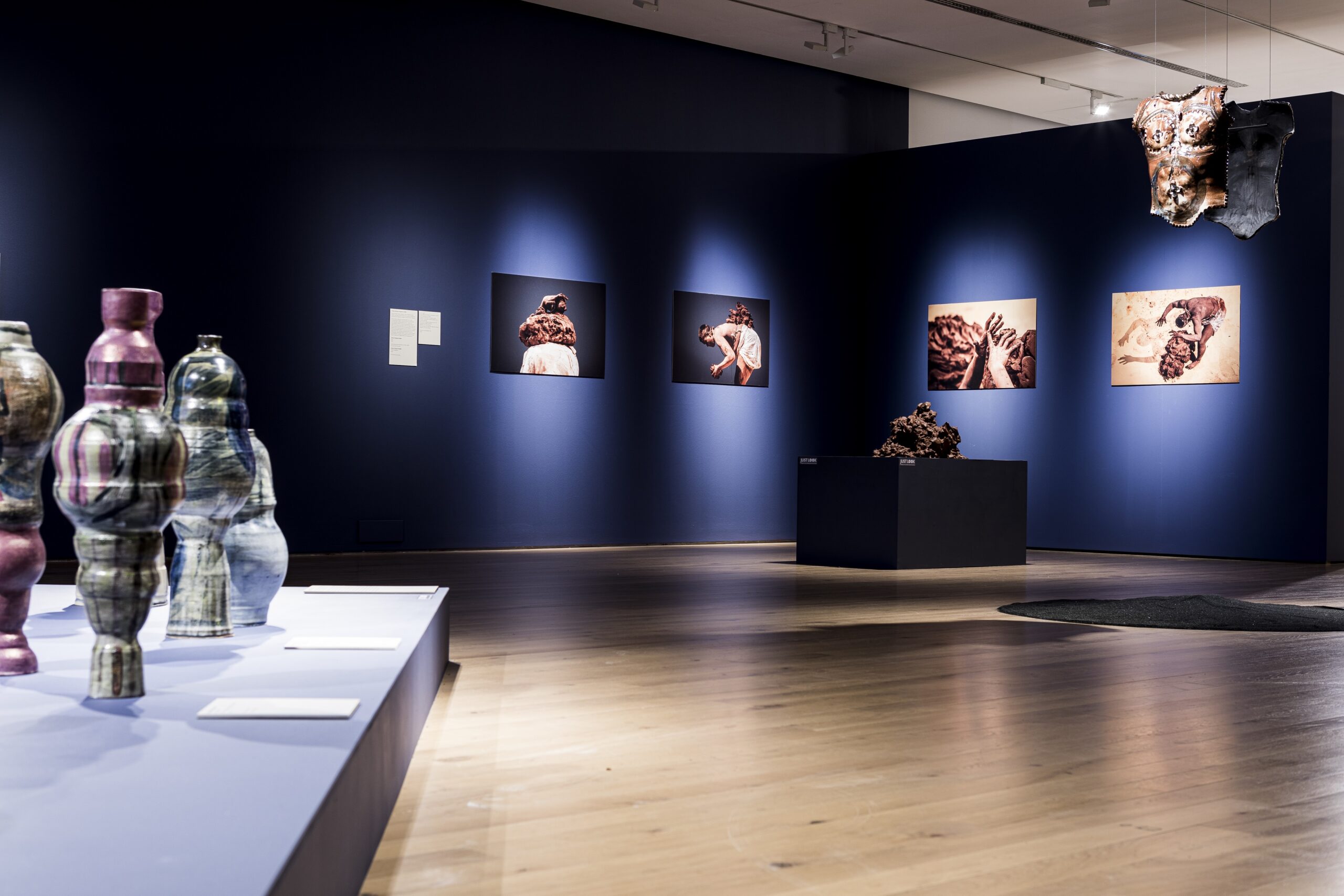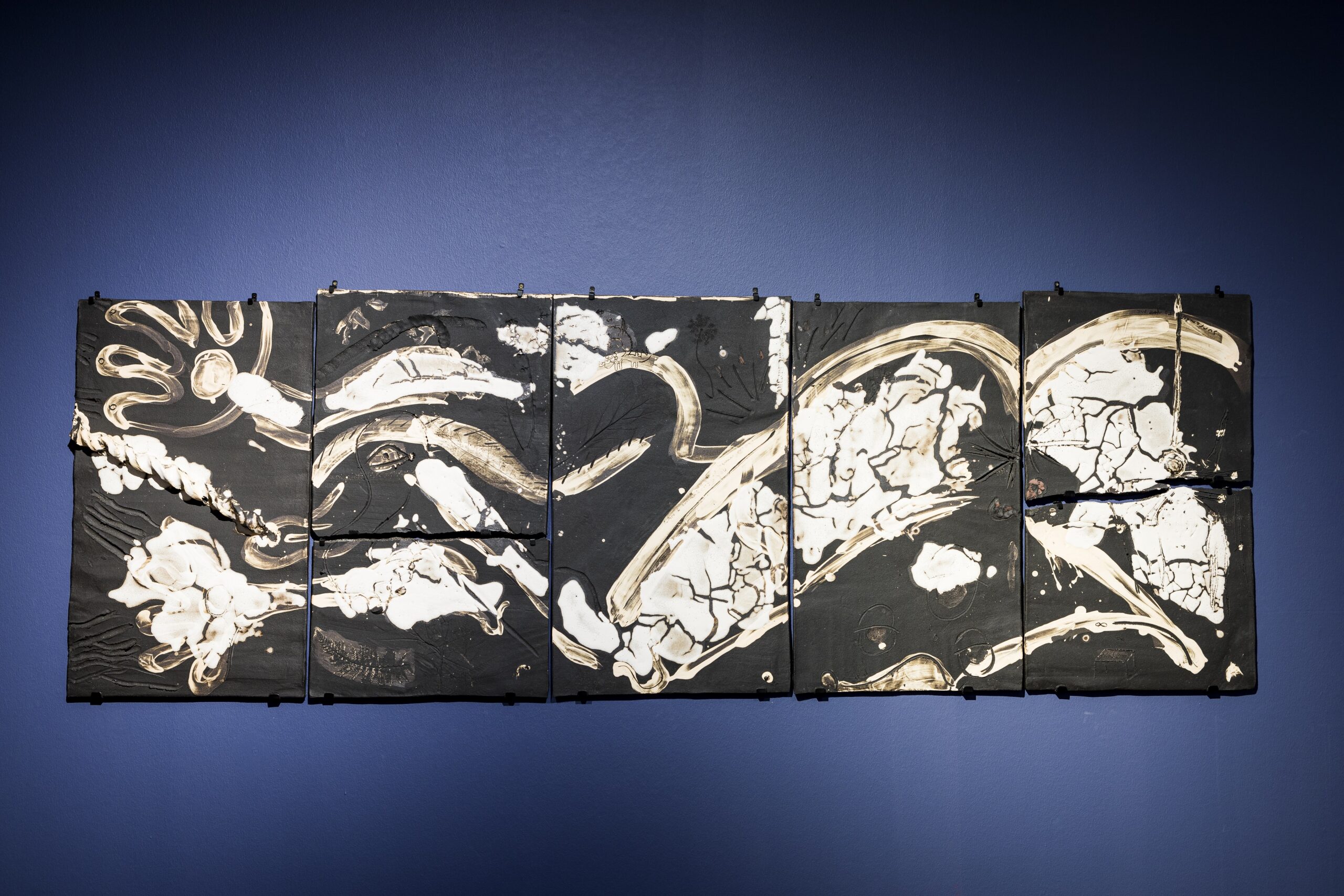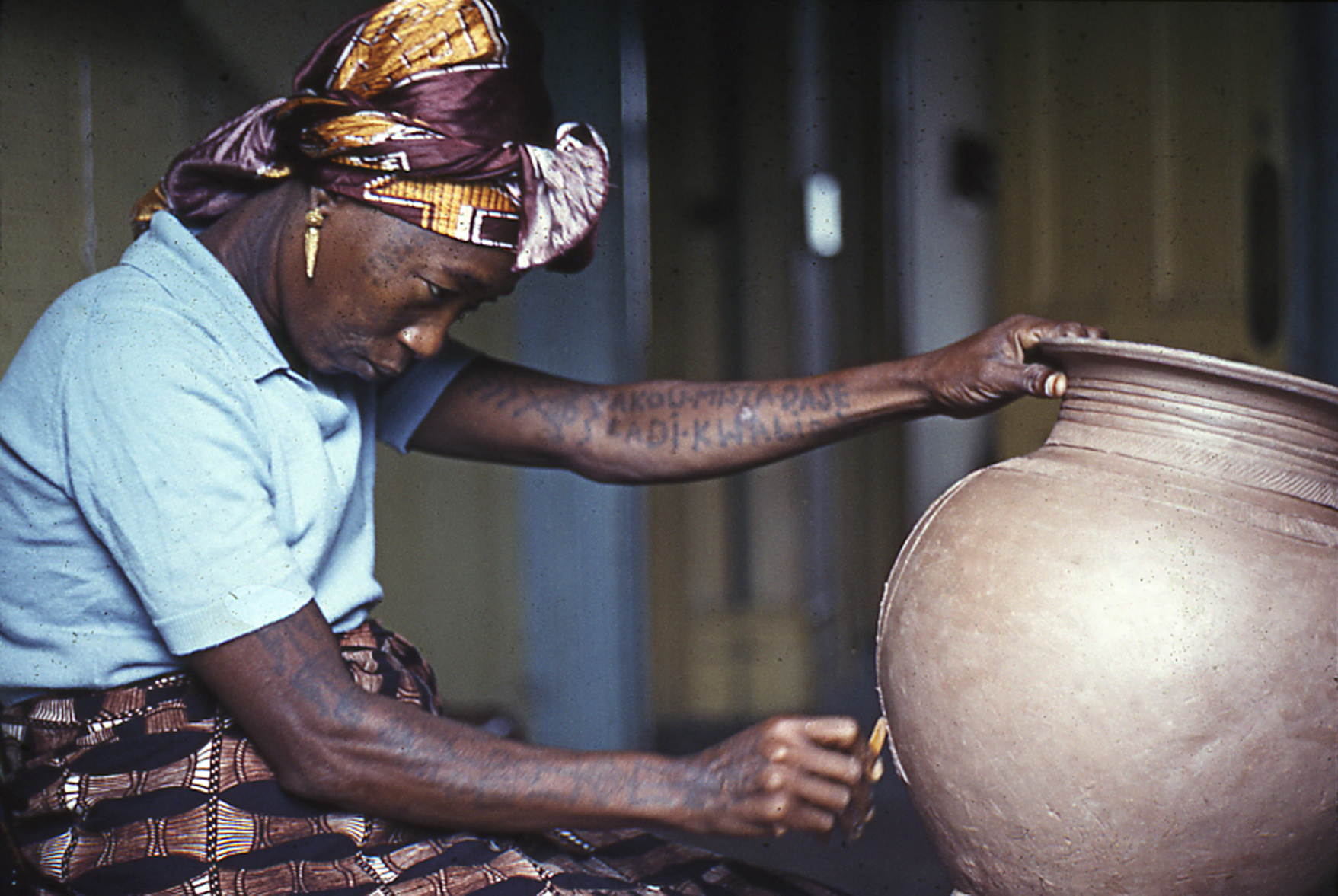Reflecting on Body Vessel Clay #BlackHistoryMonth
Blog by Dr Helen Walsh, Curator of Ceramics
‘Body Vessel Clay: Black Women, Ceramics & Contemporary Art’ was a fabulous and beautiful exhibition which began at Two Temple Place, London, in January 2022 and toured to the Centre of Ceramic Art at York Art Gallery in June 2022. In practical terms it was interesting to see it transform from the elaborate and extravagantly decorated domestic spaces of William Waldorf Astor’s neo gothic mansion which was completed in 1895, to the large, austere and blank art gallery spaces in York. The darkly glazed and richly textured Abuja pots glistened like jewels against a backdrop of clay pink paint, whilst the graphic forms of works by Dame Magdalene Odundo and Bisila Noha stood strongly against off white. Shawanda Corbett’s tall colourful anthropomorphic forms danced alongside Julia Phillips film and the sound of squelching Clay in Jade Montserrat’s film acted almost as a soundtrack to the visceral nature of raw material pounded and shaped by Vivian Ezugha nearby. Phoebe Collings-James torso’s suspended from the ceiling as if weightless, evoked a curious sense of spirituality and confrontation in the dramatically painted dark blue gallery.

It is always our ambition that exhibitions are enlightening, enabling discovery, learning, understanding, appreciation and enjoyment. This exhibition did this for me, allowing the use of different types of display methods. It introduced me to new contemporary artists and allowed me to gain an insight into their working practices and the honour of experiencing them close-up during installation. It was a real pleasure to acquire a major work by Phoebe Collings-James and display it as part of the exhibition. “How many times can I surrender to you? (Your Loving has taught me how not to die)” was acquired with the generous support of the Contemporary Art Society, Art Fund, the V&A Purchase Fund and Sarah Nichols. A painting in clay, it straddles the borders between fine and decorative art. The loose expressive mark making revealing the joy the artist finds in the material, in contrast to the tension exhibited by the figure she has depicted.

We loaned a total of thirty ceramics to the exhibition, a fact that underlines how rich York Museums Trust’s collections are in this area. Working with the team at Two Temple Place and particularly the exhibition curator, Dr Jareh Das, presented a wonderful opportunity to shine a light on this part of the collection. Having the time to spend looking closely at the pots before they travelled to London allowed me to notice fascinating details, such as the faint scored lines on some of Ladi Kwali’s Water Pots, revealing how she mapped out her design on their surfaces before beginning the process of incising and impressing the decoration. Also discovering the painstaking reconstruction carried out on a Water Pot by Halima Audu after it was smashed to smithereens decades ago (take a closer look at it in our ‘Wall of Women’ next time you visit).
The starting point of the exhibition was Ladi Kwali, probably the most famous potter to emerge from Michael Cardew’s Pottery Training Centre in Abuja, Nigeria. Ladi Kwali has always seemed a distant figure to me. Similarly to the way German potter Hans Coper remains mysterious by leaving few written words about his work, Ladi Kwali’s thoughts on her work remained unspoken or are heard second-hand via the male translators who accompanied her on her travels to the UK and USA. Until this exhibition, my knowledge of her came from the archival evidence left alongside her ceramics by the male collectors Eric Milner-White, Dean of York and Bill Ismay, both clearly admirers of her work. We are very lucky at York to have such rich collections encompassing the work of Ladi Kwali and other Nigerian potters who worked at Cardew’s pottery- Halima Audu, Asibe Ido, Clement Kofi Athey, Bawa Ushafa, George Sempagala- melding local ceramic traditions with influences from the British studio pottery movement to create fascinating hybrid objects against the backdrop of the political upheaval as Nigeria gained independence. Through this sensitively curated exhibition, Jareh Das has succeeded in bringing Ladi Kwali to life and giving her back her voice.
There is still more to discover about these potters, their work, influence and legacy, but many of the pieces in York’s collections will soon be on display again in our new redisplay of a large 17m long wall case celebrating the women artists and collectors who have played such an important role in the creation of CoCA. Works by Magdalene Odundo will go on display in our exhibition ‘The Yorkshire Tea Ceremony’ highlighting the support and friendship collector Bill Ismay provided her with during her early career. These will be joined by examples by Kwali and other Abuja potters whom Ismay discovered whilst collecting the work of Michael Cardew.

It is thanks to Ismay that we have two beautiful colour photographs of Ladi Kwali demonstrating the decoration of her famous Water Pots, revealing her intense concentration, along with the details of her clothing and tattoos. In a letter to Michael Cardew, Ismay recounted an anecdote about the occasion on which the photos were taken:
“It is very annoying that (entirely through my own fault!) there is a gap in the series caused by an accident I had with the film whilst at Richmond. Partway through the C.P.A demonstration, I realized that one film (36 frames!) was going to be quite inadequate, so I hastily loaded a second camera body with an old, outdated film which had been in my bag for some time (actually, it performed quite well). Then when the first film finished, I switched to the second body and continued, meanwhile putting the first body on the floor with the intention of winding the film back at the first opportunity. I was so carried away that I both forgot to do this and forgot to check afterwards – hence the accident the following day when I opened the camera back, supposing the film to be wound back into the light trapped cassette, only to find it was still on the open spool with part of it exposed to the incoming light. (I shut the camera back again in considerably less than a second I imagine, but a fraction of a second is more than enough!)”
It is tantalising to imagine what Ismay’s lost images might have revealed.

